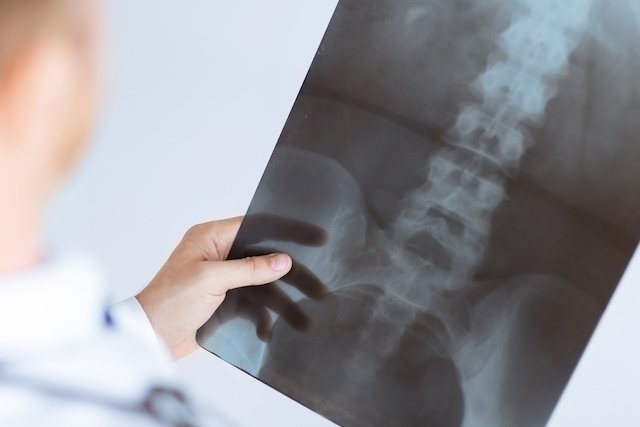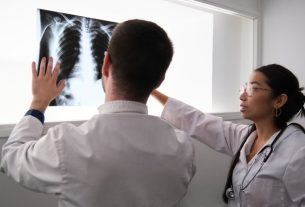Fracture is the breaking or cracking of a bone, generally due to impacts or overload, such as in the case of blows or falls, which can cause symptoms such as intense swelling, pain and, in the most serious cases, visible injuries to the skin caused by the broken parts of the bone.
Although there is a greater risk of fractures in elderly people and menopausal women, due to the greater fragility of the bones, in some cases, fractures can occur even without an apparent cause or after minor impacts, which may indicate diseases such as osteoporosis or bone tumors. .
If a fracture is suspected, it is important to go to a hospital as soon as possible for an evaluation and start the most appropriate treatment according to the orthopedist’s guidance, and generally involves immobilization of the affected limb, manual realignment of the bone or even surgery.

Fracture symptoms
The main symptoms of fracture are:
- Intense pain;
- Swelling, bruising or bleeding from the fractured site;
- Site deformity;
- Total or partial inability to move the fractured limb;
- Injuries at the fracture site, in some cases;
- Numbness and tingling in the area;
- Snaps.
If a fracture is suspected, it is not recommended to try to put the bone or limb in place, as it is not only very painful but can worsen the damage caused by the fracture. Therefore, it is important to go to an emergency room so that appropriate treatment can be given. Find out what first aid should be like for fractures.
How to confirm the diagnosis
The diagnosis of the fracture is made by the orthopedist through the history of blows, accidents or falls, physical examination of the affected limb, in addition to an X-ray examination.
In some cases, your doctor may order MRI or CT scans.
Make an appointment with an orthopedist in the nearest region:
Taking care of your health has never been easier!
Possible causes
The main causes of fracture are:
- Traffic or work accidents;
- Falls or blows
- Sports practice;
- Physical aggression and other types of impact;
- Bone overload due to muscle fatigue.
Furthermore, fractures can also occur due to health problems, such as osteoporosis, osteopenia, tumor or cancer metastasis in the bone, or brittle bone disease, for example. Understand what brittle bone disease is.
Main types of fracture
The main types of fracture are:
1. Traumatic
Traumatic fractures are the most characteristic of accidents, for example, in which excessive force is applied to the bone, but it can also be due to repetitive movements that gradually damage the bone, favoring the fracture.
2. Pathological
Generally, pathological fractures occur without an apparent cause or due to small blows, as in osteoporosis or bone tumors, as they make bones more fragile.
3. Open or exposed
Open or open fractures are those in which there are injuries to the skin due to the fracture, causing the area where it occurred to be exposed. There is generally a greater risk of infections in this type of fracture and, therefore, the use of antibiotics may be indicated. See what to do in case of open fractures.
4. Closed
Closed fractures are a type of fracture that does not cause skin breakdown despite the broken bone, which is still enough to cause symptoms such as intense swelling and pain in the area.
5. Complete
Complete fractures usually cause the bone to break completely into different fragments.
6. Incomplete
These are fractures in which the bone does not break completely, but still causes fracture symptoms.
7. Simple
A fracture is generally considered simple when the bone breaks into just two fragments.
8. Complex
Fractures are complex when the bone breaks, generating several fragments that are generally difficult to align again despite treatment, not always maintaining good contact between the broken parts.
How the treatment is carried out
Fracture treatment must be carried out under the guidance of an orthopedist and varies depending on the type of fracture.
The main treatments that can be carried out by the doctor are:
- Immobilization of the affected limbwith plaster or splints;
- Manual manipulation or realignment of the bonecalled reduction;
- Anti-inflammatory or analgesic medicationsto relieve pain and swelling;
- Rest the affected limbto aid recovery and relieve pain;
- Elevate the affected limb above the level of the heartwhenever possible, to help reduce swelling.
Furthermore, depending on the type of fracture, the doctor may recommend surgery.
Fracture recovery time
Fracture recovery time varies depending on the affected bone, however, in general, the time for healing and consolidation of the bone can take 4 to 6 months.
Possible complications
The main complications that may arise a few hours or days after the fracture are damage to blood vessels or nerves, pulmonary or fat embolism, compartment syndrome or infections.
Furthermore, other complications include healing problems, limbs with different sizes, osteoarthritis or bone necrosis.
Bibliography
- MICK, P.; FISHER, C. Delayed Fracture Healing. Semin Musculoskelet Radiol. 26. 3; 329-337, 2022
- COLEMAN, N. General Fracture Considerations. Curr Sports Med Rep. 17. 6; 175-176, 2018
- EINHORN, T. A.; GERSTENFELD, L. C. Fracture healing: mechanisms and interventions. Nat Rev Rheumatol. 11. 1; 45-54, 2015
- AMERICAN ACADEMY OF ORTHOPAEDIC SURGEONS. Fractures (Broken Bones). Available at: <https://orthoinfo.aaos.org/en/diseases–conditions/fractures-broken-bones/>. Accessed on September 12, 2022
- KULKARNI, GS et al. Textbook of ORTHOPEDICS AND TRAUMA. 3.ed. New Delhi, India: Jaypee Brothers Medical Publishers (P) Ltd, 2016. 758-768.
- SKINNER, Harry B. et al. CURRENT Diagnosis and Treatment in Orthopedics. 5.ed. LANGE McGraw-Hill Education, 2014.

Sign up for our newsletter and stay up to date with exclusive news
that can transform your routine!
Warning: Undefined array key "title" in /home/storelat/public_html/wp-content/plugins/link-whisper-premium/templates/frontend/related-posts.php on line 12
Warning: Undefined array key "title_tag" in /home/storelat/public_html/wp-content/plugins/link-whisper-premium/templates/frontend/related-posts.php on line 13



